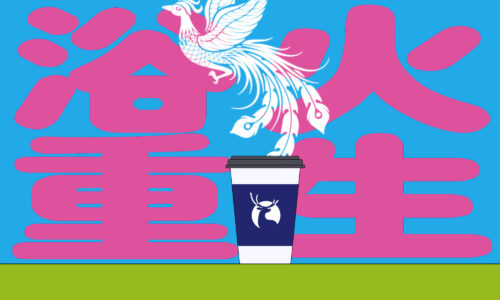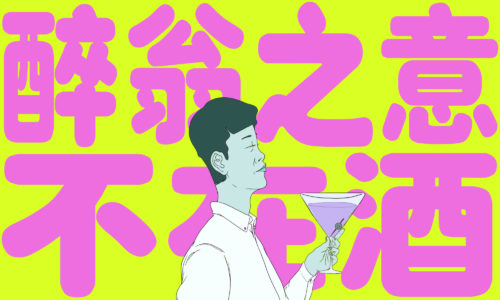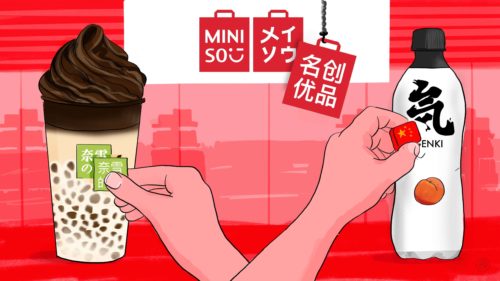China’s instant coffee market is red hot
Instant coffee in China is far more delicious than it used to be, thanks to heated competition between foreign multinationals, led by Nestlé, and a new range of innovative domestic competitors.

China has a thriving coffee culture, with no shortage of places to buy a latte or a flat white. The U.S. chain Starbucks operates more than 6,000 outlets on the Chinese mainland, employing more than 60,000 people, according to its website. Local competitor Luckin Coffee 瑞幸咖啡, which was founded in 2017, is an even bigger operation, with over 7,200 outlets in China.
Yet beyond all these outlets serving freshly ground coffee, the Chinese also consume large quantities of instant coffee. In fact, we can generally divide the coffee market into three key segments — freshly ground coffee, i.e. the likes of Starbucks and Luckin Coffee; instant coffee; and ready-to-drink coffee, sold by e.g. Nestle, Starbucks, and Japanese brand Suntory. In China, instant coffee accounts for more than 50% of the Chinese coffee market, compared to only around 8% in the U.S.
For many years, the instant coffee industry in China has been dominated by the Swiss multinational Nestlé. However, new Chinese competitors are now giving Nestlé a serious run for its money.
Planting the seed
Since the 1980s, Nestlé has been encouraging people in China to regard coffee as a chic alternative to tea. It showed television audiences a step-by-step guide on how to enjoy coffee through a series of story-based commercials which used the slogan “Tastes Great” (味道好极了).
As a result, people learned to attach a certain value to a glass Nestlé bottle of instant coffee. It was regarded as a treat worthy of being offered as a special gift. However, after Starbucks began its aggressive expansion in China from 1998, people began to disdain the taste and aroma of instant coffee, regarding it as inferior to freshly-brewed alternatives. There was also a view that instant coffee was unhealthy because it was often combined with ingredients such as sugar and non-dairy creamer, or Coffee Mate.
China news, weekly.
Sign up for The China Project’s weekly newsletter, our free roundup of the most important China stories.
New flavors
By 2017, executives at Nestlé were forced to acknowledge that the company was facing problems in China. Even though it had long dominated the market with a share of 70%, it had not come up with many new products. Like many multinationals, it seemed slower to innovate than startups. Domestic competitors seized an opportunity and new instant coffee brands emerged, including Yongpu 永璞, Saturnbird 三顿半, and Tasogare 隅田川.
In 2019, Saturnbird even exceeded Nestlé as the leading instant coffee brand in China, as measured by sales on Singles Day on the ecommerce platform TMall. Recent figures suggest that Saturnbird, Tasogare, and Yongpu are all catching up with Nestlé for market share in China.
Young Chinese coffee consumers have more refined tastes than previous generations. The new competitors are therefore trying to “upgrade” their instant coffee brands, raising the price above the basic level but keeping it cheaper than freshly ground coffee.
To capture the imagination of the younger generation, the new companies are emphasizing new product development and carefully designed aesthetics. Each of the domestic companies has a unique approach:
- Tasogare aims for a multi product, low price strategy to make instant coffee healthy as well as accessible.
- Saturnbird focuses on portable, high quality specialty coffees. The company has a striking flagship store and attractive mini cups of coffee powder.
- Yongpu is the pioneer of coffee liquid in China. It has a cute mascot (based on traditional Chinese guardian lions) known as “animal barista” (石端正 shízhuāndèng) to appeal to younger customers.
Fighting back
Foreign brands have not taken the new competition lying down, and have responded by revamping their strategies in China. Léi Wáng 王雷, VP of Retail Channel and Ecommerce at Nestlé Greater China, says: “We do not do superficial innovation. We have done a lot of flavor tests and analysis. Also, we have a mature supply chain.” In the last few years, Nestlé has launched hundreds of innovative or optimized products to meet the demands of different consumers, from beginners to connoisseurs.
Starbucks has also widened its product line-up and debuted a new category called “premium specialty instant coffee”. This includes a mini cup similar to Saturnbird’s design but with a higher price. As a result, both Starbucks’ and Nestlé’s soluble coffee products experienced positive growth momentum in China in 2022.
But the Chinese brands are not standing still either. For example, Saturnbird offers bottled liquid Coffee Mate with popular flavors such as coconut and oat milk. The idea originally came from Nestlé but the multinational never managed to launch the full range of products in China.
Instead of relying on a traditional marketing approach, Yongpu has invested in brand awareness and engagement through hundreds of brand collaborations. However, domestic companies try to avoid head-to-head competition with the likes of Nestlé by employing their own unique growth strategies.
In some ways, the multinationals and the local companies are working together to shape China’s coffee culture and nurture the market. They are learning from each other and in the process, offering an ever increasing range of drinks to their eager consumers.






